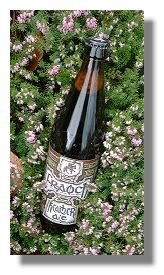
Blended scotch whisky has, rather unfairly, been saddled with a bad reputation. Sure there are some bottom shelf blends that will turn your stomach, but there are also blends that offer excellent quality at an affordable price. In fact, it is far easier to find an affordable blend that tastes great, than it is to find a single malt of similar quality at a similarly low price point.
What is it?
A blend contains a mix of single malts and a component of grain whisky, which unlike a single malt is made from grains other than barley. Grain whisky is lighter in body and should ideally allow the complexity of the malt to shine through.
The difficulty for the master blenders, who figure out the exact proportion of different malts and grains to use in a blend, is maintaining a consistent product and sourcing enough malt to widely distribute the final product. The beauty of single malts is their variability, but blenders want a consistent end product. When you buy a bottle of Johnnie Walker you expect it to taste a certain way. Blenders must work with what is available and continually tweak the recipe to offer a final product that is familiar to consumers from batch to batch.
William Grant & Sons
The art of blending becomes a great deal easier when you have a massive supply of quality malt available. William Grant and Sons is still a family owned company. They are the makers of Glennfiddich, Belvenie and the lesser known Kininvie single malts as well as Grivan grain whisky.
Grant revolutionized the sale of single malts when Scotland's largest blender went bankrupt and he was forced to sell Glennfiddich as a single malt. Glennfiddich remains the largest selling single malt in the world. With all of this wonderful malt, it is no wonder Grant's is able to produce excellent blends. It doesn't hurt that David Stewart, the companies master blender, has been at his post for 42 years. This is the longest tenure for any master blender in the industry.
The Whisky
Grants Family Reserve Blended Scotch Whisky smells slightly of banana, ripe fruit, toffee and contains a hint of smoke.
The taste is a mix of toffee, biscuits, cream and chocolate.
There is some smoke on the finish along with a rich fading fruit.
For around $15.00, this is tough to beat in its category. It has a little of everything and offers enough complexity to hold your interest. I would recommend this to someone who has never tried scotch and doesn't want to spend a lot of money giving it a shot.
I give this a 9/9 value to quality rating.






